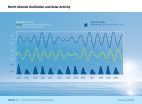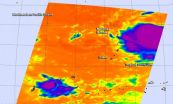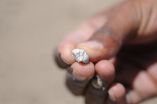(Press-News.org) A group of scientists from ITMO University, Australian National University and Aalto University called into question the results of a study, published by the researchers from Cambridge University in a prestigious scientific journal Physical Review Letters. In the original study, the British scientists claimed that they managed to find the missing link in the electromagnetic theory. The findings, according to the scientists, could help decrease the size of antennas in electronic devices manifold, promising a major breakthrough in the field of wireless communications.
The scientific inconsistency of the study was noticed by a group of Russian experts in the field of dielectric nanophotonics from several universities. As it turned out, the paper, which, at first sight, may appear to be a perfectly fine work of scientific inquiry, in fact contains numerous mistakes and inaccuracies that run counter well-known facts from the theory of electrodynamics.
Having carefully studied the original paper, the group prepared an official comment on the paper, in which they challenged the results described by the Cambridge scientists. The comment was recently published by the Physical Review Letters, the same journal that published the original paper.
The study, conducted by the British scientists, was presented as a breakthrough in the field of wireless communications. According to the official release by the Cambridge University press office, the scientists for the first time found out that the electromagnetic radiation in antennas is caused not merely by the acceleration of electrons, but also by the phenomenon known as symmetry breaking of electromagnetic field. According to the release, from the practical point of view, the discovery could potentially lead to a decrease in the size of antennas to such an extent that they could be integrated inside electronic circuits.
However, according to the authors of the comment, after carefully reading the paper it becomes clear that the results are based on an erroneous interpretation of experiments and surprising lack of understanding of theory.
"Many rather sensational claims, made by our Cambridge colleagues, do not stand to the critical analysis and can be easily refuted simply by looking at the current literature on the topic," says one of the authors of the comment, professor at Aalto University Konstantin Simovsky. "In particular, the paper says that the effectiveness of a resonator is higher when its symmetry is broken or that electromagnetic waves can only be radiated by a non-symmetrical antenna - all these conclusions and absolutely incorrect and can mislead a inexperienced reader."
The situation brings about the issue of the quality of peer review in scientific journals. The authors of the comment express concern with respect to how the review process is carried out in many high-impact journals.
"At the present time, scientists that review papers in scientific journals are picked up from the scientific community. However, their qualifications are not always enough to reasonably evaluate studies that are to be published," says Pavel Belov, head of the Department of Nanophotonics and Metamaterials at ITMO University. "The reviewer's main task now boils down to publishing interesting papers on hot topics, while the true novelty and scientific accuracy of the results are not checked well enough."
The authors of the comment are renowned experts in the field of dielectric nanoantennas for optical and microwave ranges. The group has published numerous research and review papers on the topic of dielectric nanophotonics. Recently, one of the authors of the comment and senior researcher at the Department of Nanophotonics and Metamaterials of ITMO University Alexander Krasnok developed and patented an ultradirectional optical dielectric nanoantenna and a dielectric nanoantenna of Yagi-Uda type.
Dielectric nanoantennas represent a promising alternative to antennas based on metallic nanoparticles. Thanks to the lower losses related to the scattering of radiation in the optical range, dielectric nanoparticles are ideal for effective control and modulation of electromagnetic waves on nanoscale. On top of it, dielectric nanoantennas show other exotic properties that are not inherent in their metallic analogues - it was shown, for instance, that dielectric nanoparticles open possibilities to construct nanoantennas that have simultaneous tunable electric and magnetic response.
INFORMATION:
Drugs commonly used to treat high blood pressure, and prevent heart attacks and strokes, are associated with significantly worse cardiovascular outcomes in hypertensive African Americans compared to whites, according to a new comparative effectiveness research study led by researchers in the Department of Population Health at NYU Langone Medical Center.
The study, published on September 15 in the Journal of the American College of Cardiology (JACC), is unique, the authors say, in that it evaluates racial differences in cardiovascular outcomes and mortality between hypertensive ...
Are climate predictions over periods of several years reliable if weather forecast are still only possible for short periods of several days? Nevertheless there are options to predict the development of key parameters on such long time scales. A new study led by scientists at GEOMAR Helmholtz Centre for Ocean Research Kiel shows how the well-known 11-year cycle of solar activity affects the long-time development of dominant large-scale pressure systems in the Northern Hemisphere.
For their investigations the scientists used a coupled ocean-atmosphere model. In addition, ...
September 15, 2015 - Nyon, Switzerland A study from the University of Southampton and Sheffield Medical School in the UK projects a dramatic increase in the burden of fragility fractures within the next three decades. By 2040, approximately 319 million people will be at high risk of fracture -double the numbers considered at high risk today.
In this first study to estimate the global burden of disease in terms of fracture probability, the researchers quantified the number of individuals worldwide aged 50 years or more at high risk of fracture in 2010 and projected figures ...
Marijuana use among American high school students is significantly lower today than it was 15 years ago, despite the legalization in many states of marijuana for medical purposes, a move toward decriminalization of the drug and the approval of its recreational use in a handful of places, new research suggests.
The Johns Hopkins Bloomberg School of Public Health researchers say, however, that marijuana use is significantly greater than the use of other illegal drugs, with 40 percent of teens in 2013 saying they had ever smoked marijuana. That number was down from 47 percent ...
The twentieth tropical depression of the Northwestern Pacific Ocean formed early on September 14 and became a tropical storm the next day, triggering a tropical storm watch. NASA's Aqua satellite passed over the low pressure area as it was consolidating and saw powerful thunderstorms circling the center.
The Atmospheric Infrared Sounder or AIRS instrument that flies aboard NASA's Aqua satellite gathers data in infrared light that provides information about temperatures. The colder the cloud top temperature, the higher the storms are in the troposphere (because the higher ...
TORONTO, Sept. 15, 2015 - A commonly prescribed drug for heart disease may do more good than previously thought. Researchers at York University have found that beta-blockers may prevent further cell death following a heart attack and that could lead to better longer term patient outcomes.
Human hearts are unable to regenerate. When cardiac muscle cells die during and immediately after a heart attack, there is no way to bring the organ back to full health, which contributes to the progression towards eventual heart failure.
Preventing the cells from dying in the first ...
Millions of years ago, our primate ancestors turned from trees and shrubs to search for food on the ground. In human evolution, that has made all the difference.
The shift toward a grass-based diet marked a significant step toward the diverse eating habits that became a key human characteristic, and would have made these early humans more mobile and adaptable to their environment.
New evidence just published by a research team led by a Johns Hopkins University scientist shows that this significant shift took place about 400,000 years earlier than experts previously ...
Washington, DC - September 15, 2015 - For years, researchers have known that the human skin is home to a diverse community of microorganisms, collectively known as the skin microbiome. Now a new study has shown that individuals with a particular skin microbiome can effectively clear bacteria that cause chancroid, a sexually transmitted disease common in the developing world that has been linked to enhanced HIV transmission. The study, published in the September 15th issue of mBio, is the first prospective study to show that the skin microbiome can influence the outcomes ...
Experts should take note of local knowledge and beliefs when making plans about how to help people in vulnerable regions cope with the impacts of climate change. This will ensure that such interventions are money well spent, and are not culturally insensitive, advises Conor Murphy of Ireland's Maynooth University. Together with an interdisciplinary research team from universities in Malawi, Zambia and Ireland he interviewed community members in rural Malawi and Zambia to assess how well they are able to adapt to the way they produce food within the context of shifting belief ...
A novel radiopharmaceutical probe developed at Massachusetts General Hospital (MGH) has the potential of providing physicians with information that could save the lives of patients with ischemic stroke or pulmonary embolism - conditions caused when important blood vessels are blocked by a clot that has traveled from another part of the body. In a report that will appear in the October issue of the journal Arteriosclerosis, Thrombosis and Vascular Biology and has been published online, the MGH team describes using this new probe to conduct full-body scans in an animal model. ...


